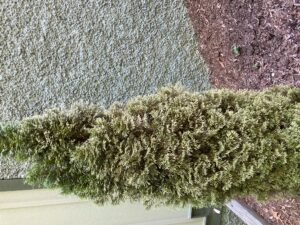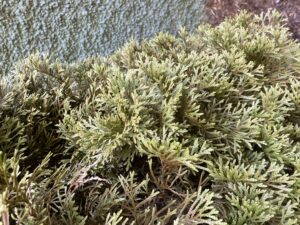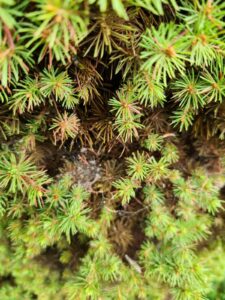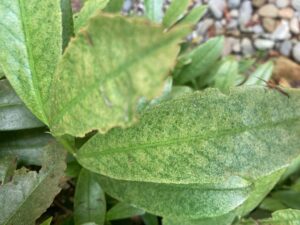Pest Alert – Spider Mites in Landscapes
go.ncsu.edu/readext?944981
en Español / em Português
El inglés es el idioma de control de esta página. En la medida en que haya algún conflicto entre la traducción al inglés y la traducción, el inglés prevalece.
Al hacer clic en el enlace de traducción se activa un servicio de traducción gratuito para convertir la página al español. Al igual que con cualquier traducción por Internet, la conversión no es sensible al contexto y puede que no traduzca el texto en su significado original. NC State Extension no garantiza la exactitud del texto traducido. Por favor, tenga en cuenta que algunas aplicaciones y/o servicios pueden no funcionar como se espera cuando se traducen.
Português
Inglês é o idioma de controle desta página. Na medida que haja algum conflito entre o texto original em Inglês e a tradução, o Inglês prevalece.
Ao clicar no link de tradução, um serviço gratuito de tradução será ativado para converter a página para o Português. Como em qualquer tradução pela internet, a conversão não é sensivel ao contexto e pode não ocorrer a tradução para o significado orginal. O serviço de Extensão da Carolina do Norte (NC State Extension) não garante a exatidão do texto traduzido. Por favor, observe que algumas funções ou serviços podem não funcionar como esperado após a tradução.
English
English is the controlling language of this page. To the extent there is any conflict between the English text and the translation, English controls.
Clicking on the translation link activates a free translation service to convert the page to Spanish. As with any Internet translation, the conversion is not context-sensitive and may not translate the text to its original meaning. NC State Extension does not guarantee the accuracy of the translated text. Please note that some applications and/or services may not function as expected when translated.
Collapse ▲Spider Mites
Spider mites are very small arachnids (spider family) that infest a wide range of horticulturally and agriculturally important crops. These mites are very small, almost invisible to the naked eye. Spider mites prefer warm dry weather because rain washes them off of plants.
Host Plants
Virtually all plants are susceptible to infestation. Greenhouse plants are especially vulnerable as are outdoor herbaceous perennials. Many ornamental shade trees and landscape shrubs such as conifers, oak, buckeye, and many others may be infested.
Damage
The most common mite affect ing landscape plants is the Two Spotted Spider Mite (TSSM). TSSM causes stippling, flecking and speckling of leaves of ornamental trees, shrubs, and herbaceous perennials. Damage may occur outdoors in the summer when there has been little rain and temperatures are very high.
Control
Rinsing the plants a few times per week with a strong stream of water can wash spider mites off of the plant reducing populations. Sometimes you can avoid having to use pesticides in this way.
Learn more at the NC State Publication on Spider Mites
From the North Carolina Agricultural Chemicals Manual is the latest list of products to control spider mites:










